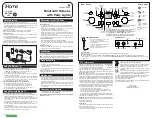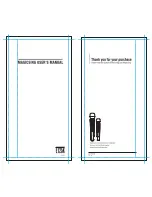
23
VVT® Control Configuration/Testing —
Carrier
VVT controls require a field-supplied VVT thermostat for the
specific application based on the control package ordered. The
thermostat is factory-supplied with default configuration. This
allows pressure dependent cooling only terminals to operate in
a stand-alone mode, during the construction phase. The install-
er is required to configure the terminal, system and user
specific parameters. All programming can be done at the
thermostat without the use of a PC. Terminal parameters in-
clude inlet area (pressure independent), airflow limits (pressure
independent), minimum or maximum damper position adjust-
ments, and damper position factor (reheat applications).
System parameters such as system type (pressure dependent or
independent), and controller address along with user parame-
ters such as occupancy and set point schedules, must be entered
before final checkout and commissioning.
For more information and details regarding specific control
configuration parameters and programming procedures, refer
to the Carrier Comfort Network® system Variable Volume and
Temperature (VVT) Product Data literature and the configura-
tion instructions provided with the thermostat.
Refer to the specific control sequence (35E-82XX) for de-
tailed operational information. This information should be used
to test and commission the control.
Control Start-Up
GENERAL — Air volume delivery to the conditioned space
is controlled by the modulating of the primary air damper and
the sequencing of the air source supply fan. The VVT control-
ler positions the damper by way of an actuator and turns the
fan on and off through relay contactors.
PRIMARY SYSTEM CHECK
1. Check that all controls, control box, and ductwork have
been properly installed and set according to installation
instructions and job requirements.
2. Check that final filters have been installed in the air-
handling apparatus. Dust and debris can adversely affect
system operation.
3. Check fan and system controls for proper operation.
4. Check electrical system and connections of any optional
electric reheat coil. If hot water reheat is used, check pip-
ing and valves per job drawings.
5. Check that all air duct connections are tight.
6. See that all balancing dampers at box outlets are in full-
open position.
Fig. 30 — Wiring Connections
Fig. 31 — Terminal Board Installation


































